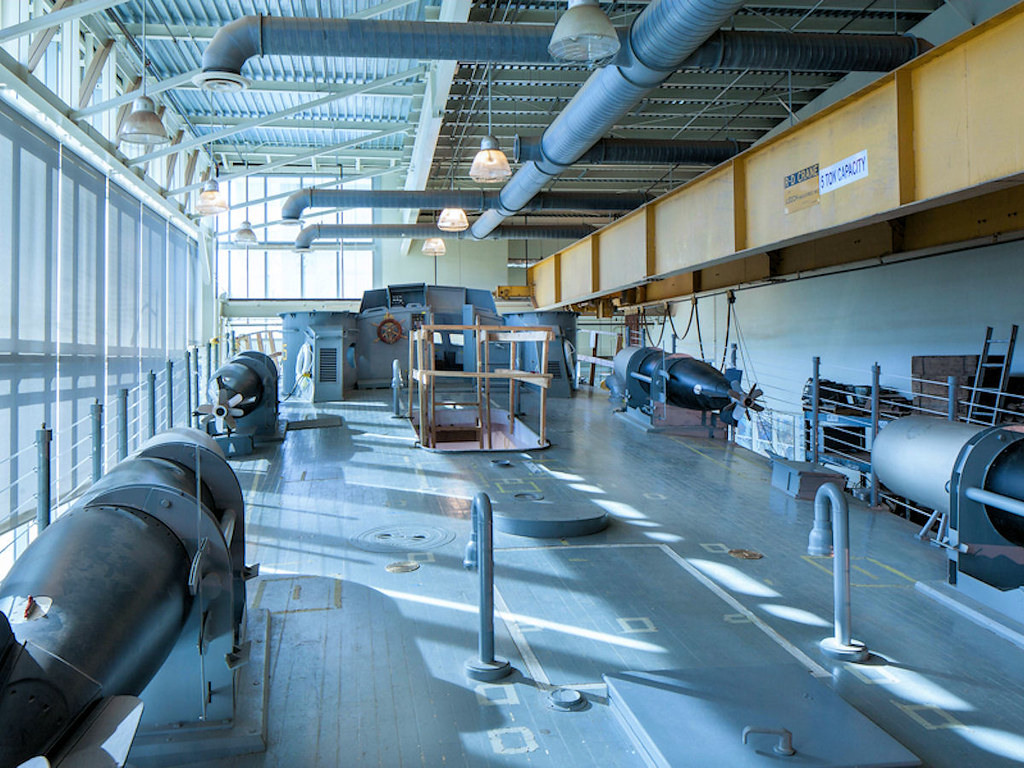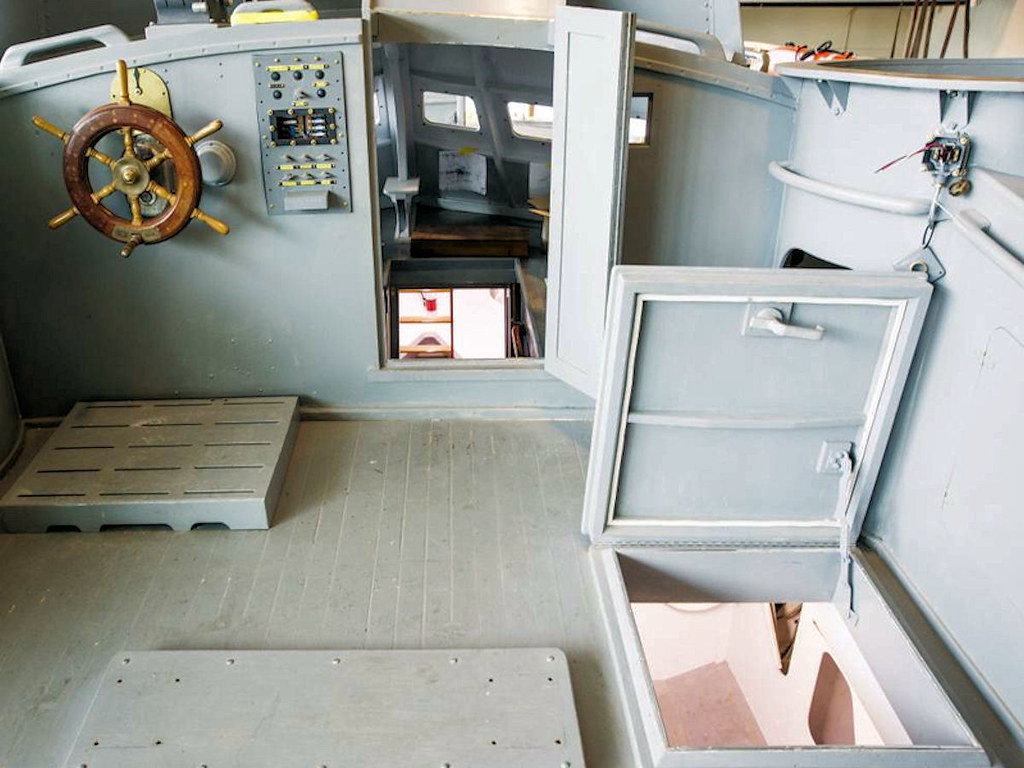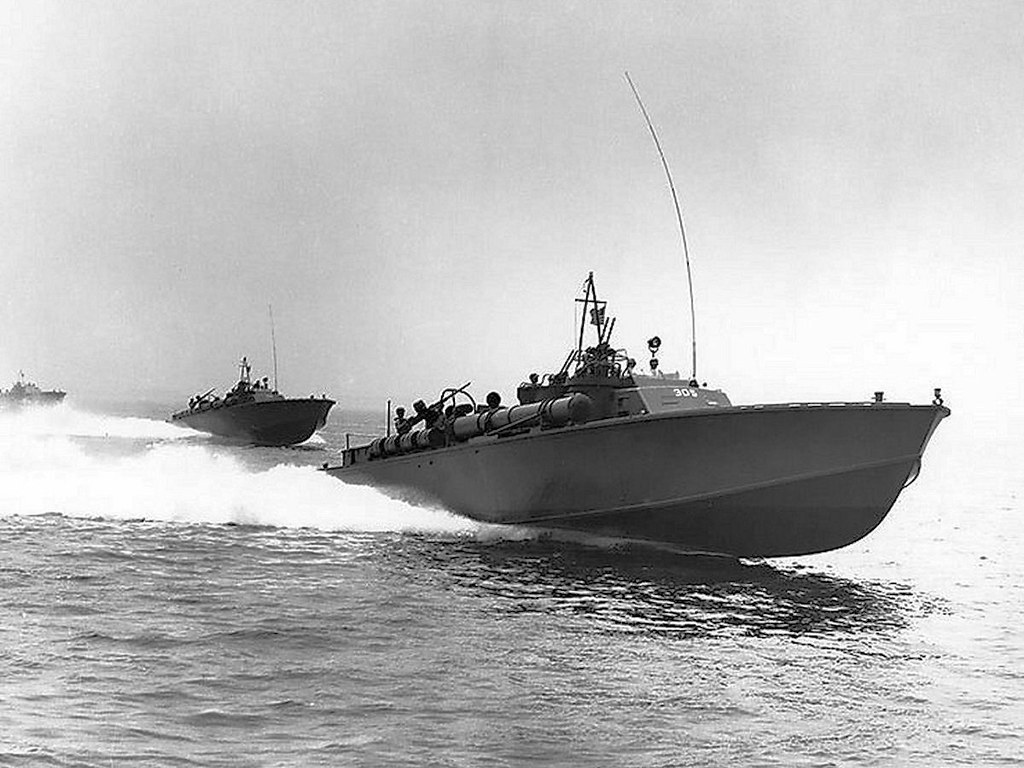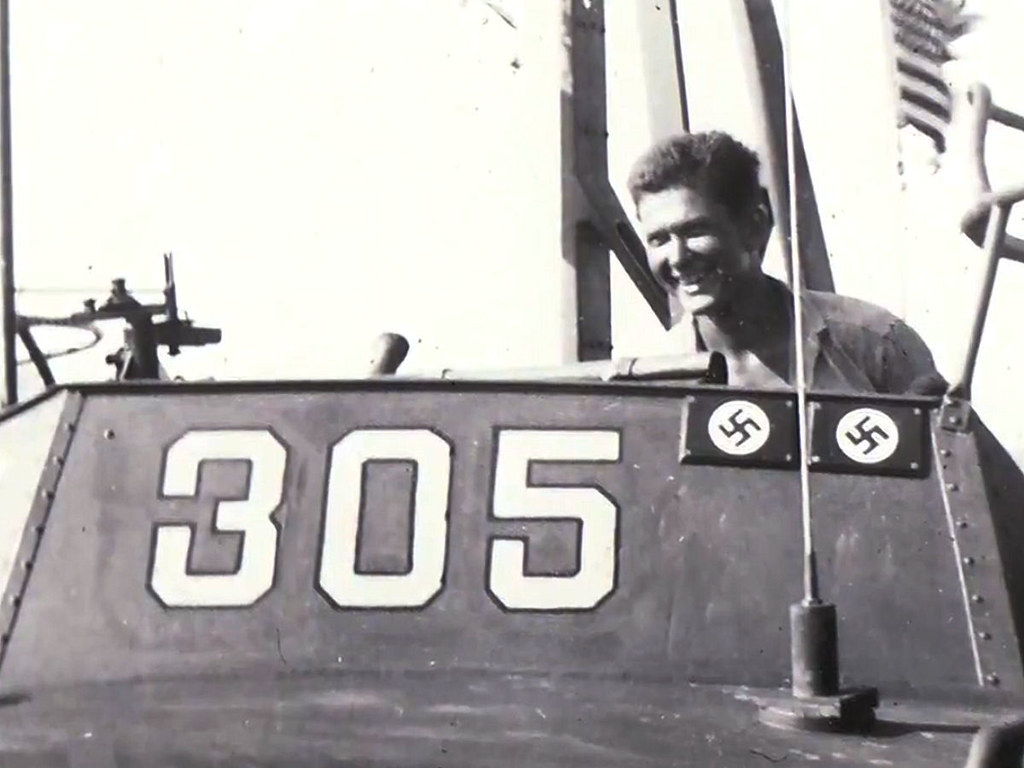I have a Flickr Album about PT Boats in General, and the restoration of PT-305 specifically. Sse:
There are numerous pictures there showing the vessel being restored, and showing it in World War II. It served in the Med, but more on that late. Here are a few:
PT-305 Restoration:


World War II Pictures:


US Navy PT Boats (which stood for Patrol Torpedo Boats), were fast, agile and very maneuverable, small attack craft used by he US Navy in world War II.
Most were were 78 feet long and 23 feet wide and powered by three 1,500-horsepower Packard engines. They were designed to outrun and outmaneuver enemy ships and carried four torpedoes and a variety of machine guns, mortars and small cannons.
These vessels served throughout the world in World War II, including around the coasts of the United States, around England and throughout the Mediterranean against Germany and Italy, and all over the Pacific against the Imperial Japanese.
Probably the most famous PT Boat was PT-109, which served in the Pacific. It was commanded by the then future President John F. Kennedy. It was split in two one night when a Japanese warship collided with it and ran right through it. John F. Kennedy's heroic action that night and later with his men is the subject of books and movies.
531 PT Boats were built for World War II. 99 were lost throughout the war to various causes. 40 of which were to enemy action, 32 to accidents (weather, collisions, and friendly fire), and 27 destroyed by their own crews to prevent their capture.
Today only four PT Boats survive, including PT-305 for whom this page is dedicated.
PT-305 served in the Mediterranean Theater of Operations and had several nicknames including The Sudden Jerk, The Bar Fly and The Half Hitch.
Its crew of three officers and 14 enlisted men sank an armored German transport barge off the coast of France on June 18, 1944; landed French commandos prior to Operation Dragoon, the invasion of Southern France, on Aug. 15, 1944; and sank an Italian barge during the night of April 24, 1945.
In the late Spring of 1945 it was transferred to the United States to be refitted for action in the Pacific against the Japanese, but before it could be finished and transported to the western Pacific, World War II ended.
After the war, most all of the PT-Boats were stripped of anything valuable and then burned or otherwise destroyed. Today only three or four survive.
One of them is PT-305.
After the war, PT-305 was refitted for commercial use as a tour boat around the Chesapeake Bay. Later it was used as oyster seed craft, during which time its mahogany deck was covered in piles of mud and oyster shells.
In 2001, PT-305 was acquired by the Defenders of America Naval Museum in Galveston, Texas, which transferred it to the National World War II Museum in New Orleans in 2007.
Since that time it has been slowly restored and completely rebuilt, all the way from new ribs and frame to the two-layer wooden hull and even electronic systems. Restoring and rebuilding the deck with its 2-inch-by-70-foot strips of mahogany was a major undertaking.
The museum’s website indicates that PT-305 “is anticipated to have at least one more run on Lake Pontchartrain before becoming a permanent part of the exhibits in the expanded museum.”
There are numerous pictures there showing the vessel being restored, and showing it in World War II. It served in the Med, but more on that late. Here are a few:
PT-305 Restoration:


World War II Pictures:


US Navy PT Boats (which stood for Patrol Torpedo Boats), were fast, agile and very maneuverable, small attack craft used by he US Navy in world War II.
Most were were 78 feet long and 23 feet wide and powered by three 1,500-horsepower Packard engines. They were designed to outrun and outmaneuver enemy ships and carried four torpedoes and a variety of machine guns, mortars and small cannons.
These vessels served throughout the world in World War II, including around the coasts of the United States, around England and throughout the Mediterranean against Germany and Italy, and all over the Pacific against the Imperial Japanese.
Probably the most famous PT Boat was PT-109, which served in the Pacific. It was commanded by the then future President John F. Kennedy. It was split in two one night when a Japanese warship collided with it and ran right through it. John F. Kennedy's heroic action that night and later with his men is the subject of books and movies.
531 PT Boats were built for World War II. 99 were lost throughout the war to various causes. 40 of which were to enemy action, 32 to accidents (weather, collisions, and friendly fire), and 27 destroyed by their own crews to prevent their capture.
Today only four PT Boats survive, including PT-305 for whom this page is dedicated.
PT-305 served in the Mediterranean Theater of Operations and had several nicknames including The Sudden Jerk, The Bar Fly and The Half Hitch.
Its crew of three officers and 14 enlisted men sank an armored German transport barge off the coast of France on June 18, 1944; landed French commandos prior to Operation Dragoon, the invasion of Southern France, on Aug. 15, 1944; and sank an Italian barge during the night of April 24, 1945.
In the late Spring of 1945 it was transferred to the United States to be refitted for action in the Pacific against the Japanese, but before it could be finished and transported to the western Pacific, World War II ended.
After the war, most all of the PT-Boats were stripped of anything valuable and then burned or otherwise destroyed. Today only three or four survive.
One of them is PT-305.
After the war, PT-305 was refitted for commercial use as a tour boat around the Chesapeake Bay. Later it was used as oyster seed craft, during which time its mahogany deck was covered in piles of mud and oyster shells.
In 2001, PT-305 was acquired by the Defenders of America Naval Museum in Galveston, Texas, which transferred it to the National World War II Museum in New Orleans in 2007.
Since that time it has been slowly restored and completely rebuilt, all the way from new ribs and frame to the two-layer wooden hull and even electronic systems. Restoring and rebuilding the deck with its 2-inch-by-70-foot strips of mahogany was a major undertaking.
The museum’s website indicates that PT-305 “is anticipated to have at least one more run on Lake Pontchartrain before becoming a permanent part of the exhibits in the expanded museum.”
